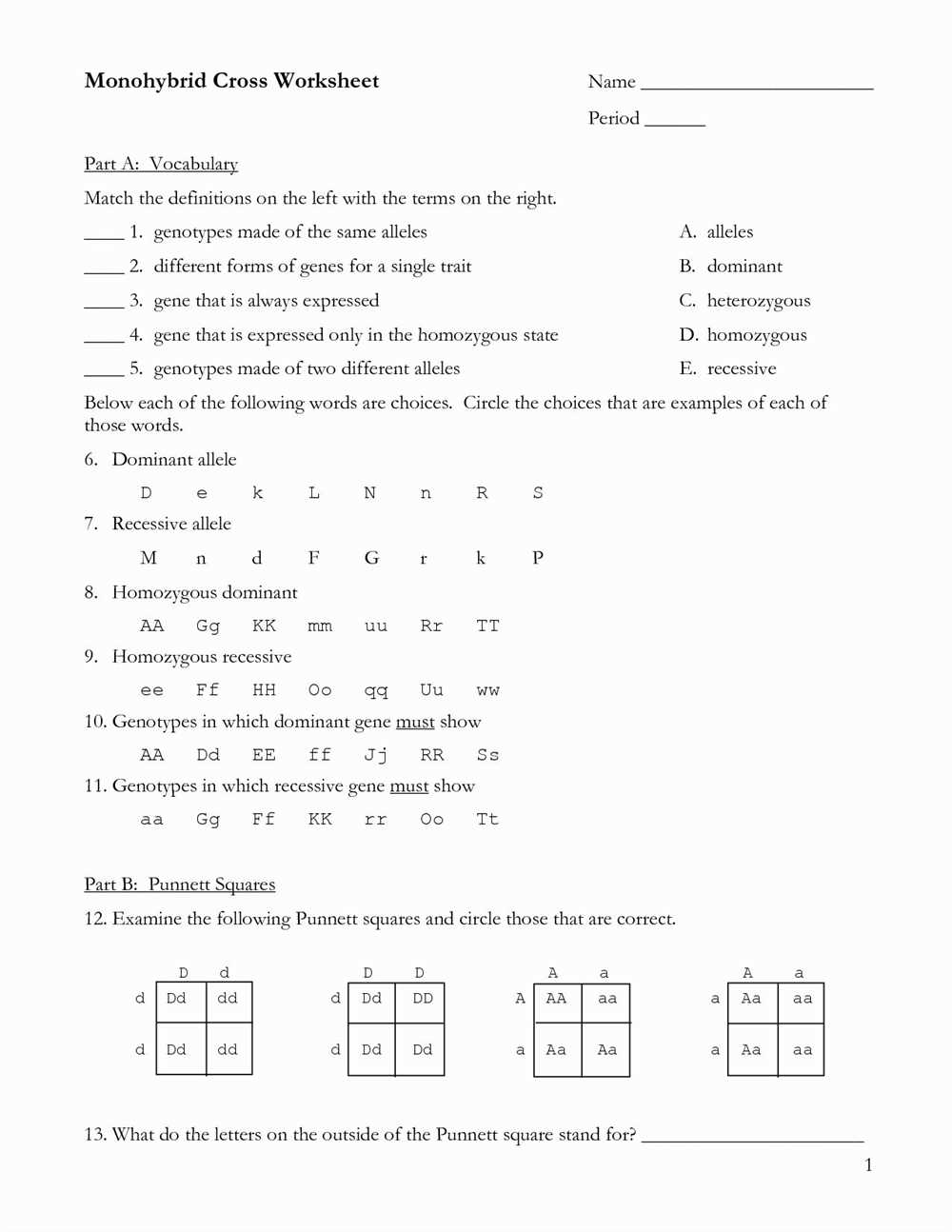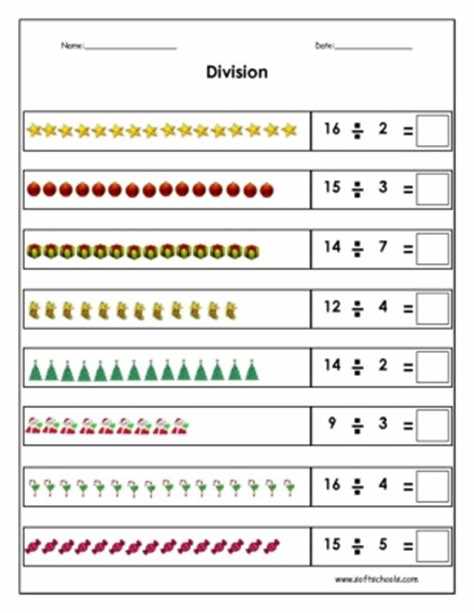
PCR, or Polymerase Chain Reaction, is a powerful technique used in molecular biology to amplify specific DNA sequences. This worksheet provides answers and explanations to help you understand the basics of PCR.
1. What is the purpose of PCR?
The purpose of PCR is to amplify a specific region of DNA. This allows researchers to study and analyze small amounts of DNA, making it useful in various applications such as genetic testing, forensic analysis, and disease diagnosis.
2. What are the three steps of a PCR cycle?
The three steps of a PCR cycle are denaturation, annealing, and extension. During denaturation, the DNA template is heated to separate the double-stranded DNA into single strands. In the annealing step, short DNA primers bind to complementary sequences on the DNA template. Finally, in the extension step, a DNA polymerase enzyme synthesizes new DNA strands using the primers as a starting point.
3. What is the role of DNA primers in PCR?
DNA primers are short, single-stranded DNA molecules that are complementary to the DNA sequence to be amplified. They define the region of DNA that will be copied during PCR. Primers serve as the starting point for DNA synthesis by DNA polymerase.
4. How does PCR achieve exponential amplification of DNA?
PCR achieves exponential amplification of DNA through multiple cycles of denaturation, annealing, and extension. Each cycle doubles the amount of DNA, resulting in a rapid and efficient amplification of the target DNA sequence.
5. What are the main components required for a PCR reaction?
The main components required for a PCR reaction are DNA template, DNA primers, DNA polymerase enzyme, nucleotides (building blocks of DNA), and buffer solution. The DNA template contains the target DNA sequence to be amplified, the primers define the region to be amplified, and the DNA polymerase enzyme catalyzes the synthesis of new DNA strands. Nucleotides provide the building blocks for DNA synthesis, and the buffer solution maintains the optimal conditions for the PCR reaction.
By understanding these PCR basics, you can better grasp the principles and applications of this important molecular biology technique. PCR has revolutionized many areas of research and continues to play a vital role in various scientific fields.
The PCR Process: A Brief Overview
The Polymerase Chain Reaction (PCR) is a technique that has revolutionized molecular biology and has become an essential tool in various scientific disciplines. PCR allows researchers to amplify specific DNA sequences, enabling the analysis of genes, identification of pathogens, and study of genetic diseases.
The PCR process involves three main steps: denaturation, annealing, and extension. In the denaturation step, the DNA template is heated to break the hydrogen bonds between the two strands, resulting in single-stranded DNA. This is typically achieved by heating the sample to around 94-96°C.
The next step is annealing, where short DNA primers are added to the solution. These primers are designed to specifically bind to the target DNA sequence that needs to be amplified. The temperature is then lowered to around 55-65°C to allow the primers to anneal to the single-stranded DNA template.
Once the primers are bound, the temperature is raised to around 72°C, which is the optimal temperature for the DNA polymerase enzyme to work efficiently. This enzyme extends the primers by adding complementary nucleotides to the DNA template. The extension step allows for the synthesis of new DNA strands, creating multiple copies of the target DNA sequence.
After the completion of one cycle, the process is repeated multiple times in a thermal cycler machine, which can rapidly change temperatures. Each cycle doubles the amount of DNA, resulting in an exponential amplification of the target sequence. This allows even trace amounts of DNA to be detected and analyzed.
Overall, PCR is a powerful technique that has numerous applications in various fields of research and diagnostics. It has greatly contributed to our understanding of genetics and has played a crucial role in the development of personalized medicine, genetic engineering, and forensic science.
Why Use a PCR Worksheet
PCR (Polymerase Chain Reaction) is a powerful technique used in molecular biology to amplify DNA sequences. It allows scientists to make multiple copies of a specific DNA fragment, enabling various applications such as genetic testing, disease diagnosis, forensic analysis, and DNA sequencing.
Performing PCR requires careful planning and precise execution to ensure accurate and reliable results. One valuable tool that can greatly assist scientists in organizing their PCR experiments is a PCR worksheet. This worksheet acts as a guide, documenting crucial information and providing a systematic approach to the experimental process.
Benefits of using a PCR worksheet:
- Organization: A PCR worksheet helps researchers stay organized by providing a structured format to record all relevant details. It includes sections for sample identification, primer sequences, PCR cycling conditions, and other experimental parameters. By keeping this information organized in one place, scientists can easily refer back to it during the experiment and analysis.
- Replicability: PCR is a highly sensitive technique, and even small variations in experimental conditions can lead to inconsistent results. A PCR worksheet allows scientists to document every step of the experiment precisely, ensuring that the same conditions can be replicated if needed. This promotes experimental consistency and reproducibility, essential aspects of scientific research.
- Troubleshooting: PCR experiments may encounter technical issues that can affect the quality and reliability of the results. When troubleshooting is necessary, a PCR worksheet can be a valuable resource. It provides a clear overview of the experimental setup, making it easier to identify potential sources of error and determine appropriate solutions.
- Training and Collaboration: PCR worksheets can serve as educational tools for training new scientists in the laboratory. By following the documented procedures and guidelines, beginners can learn the correct techniques and better understand the experimental process. Additionally, PCR worksheets can be shared among team members, facilitating collaboration and communication within the research group.
In conclusion, using a PCR worksheet offers several benefits for scientists conducting PCR experiments. It promotes organization, replicability, troubleshooting, and facilitates training and collaboration. By utilizing this tool, researchers can enhance the efficiency and accuracy of their experiments, ultimately advancing the field of molecular biology.
Understanding the Components of a PCR Worksheet
In order to successfully perform a polymerase chain reaction (PCR), it is essential to have a thorough understanding of its components and how they interact with each other. A PCR worksheet is a useful tool that helps scientists plan and organize their experiments, ensuring accurate and reliable results.
A PCR worksheet typically includes several sections, each with its own purpose. The first section is usually dedicated to recording the details of the experiment, such as the date, the researcher’s name, and the purpose of the PCR. This information helps in tracking and documenting the progress of the experiment.
The second section of a PCR worksheet is often dedicated to recording the components used in the reaction. This includes the DNA template, primers, nucleotides, buffer, and the DNA polymerase. Each component is listed with its respective volume or concentration, allowing the researcher to accurately measure and add the required amounts to the reaction mixture.
Another important section of a PCR worksheet is the thermal cycling program. This section outlines the temperature and duration for each step in the PCR process, including the initial denaturation, annealing, and extension cycles. It is important to carefully plan and optimize the thermal cycling program to ensure efficient amplification of the target DNA.
In addition to these sections, a PCR worksheet may also include sections for recording the results and observations during the experiment. This allows the researcher to keep track of any unexpected outcomes or issues that may arise during the PCR process.
In conclusion, a PCR worksheet is a valuable tool for organizing and documenting the various components and steps involved in a PCR experiment. By carefully planning and recording the details of the experiment, scientists can ensure accurate and reproducible results, advancing their research in fields such as genetics, microbiology, and medical diagnostics.
Interpreting the Results of a PCR Worksheet
When completing a PCR basics worksheet, it is important to understand how to interpret the results. PCR, or polymerase chain reaction, is a technique used to amplify specific DNA sequences for analysis. The results of a PCR experiment can provide valuable information about the presence or absence of a target DNA sequence.
One key aspect of interpreting PCR results is analyzing the amplification curve. This curve represents the increase in the amount of DNA produced during each cycle of the PCR reaction. A steep amplification curve indicates efficient amplification, while a shallow or plateaued curve may suggest poor amplification or the absence of the target sequence.
Positive results in a PCR assay indicate the presence of the target DNA sequence. This is typically confirmed by the appearance of a detectable product on an agarose gel or through the use of fluorescence-based detection methods. A positive result suggests that the target sequence is present in the original sample.
Negative results indicate the absence of the target DNA sequence. This could be due to various reasons, such as incorrect primer design, issues with the PCR reaction conditions, or the absence of the target sequence in the original sample. It is important to troubleshoot and repeat the experiment if necessary to confirm the absence of the target sequence.
The threshold cycle (Ct) value is another important factor to consider when interpreting PCR results. The Ct value represents the cycle number at which the fluorescence signal reaches a significant level above the background. A lower Ct value indicates a higher initial concentration of the target sequence in the starting sample. This can be used to compare the relative expression levels of different genes or quantify the amount of a specific DNA sequence.
In summary, interpreting the results of a PCR basics worksheet involves analyzing the amplification curve, identifying positive or negative results, and considering the Ct value. These factors provide insights into the presence or absence of the target DNA sequence and can be used for further analysis and experimentation.
Common Challenges in Filling Out a PCR Worksheet
When filling out a PCR (Polymerase Chain Reaction) worksheet, there are several common challenges that individuals may encounter. These challenges can arise from various factors, including the complexity of the process, the technical nature of the information, and the need for attention to detail.
1. Understanding the PCR Process

One of the main challenges in filling out a PCR worksheet is understanding the PCR process itself. PCR is a complex laboratory technique used to amplify specific DNA sequences, and it involves several steps, including denaturation, annealing, and extension. Individuals may struggle to grasp the purpose and sequence of these steps, which can make it difficult to accurately fill out the worksheet.
2. Interpreting Technical Terminology
Another challenge is interpreting the technical terminology used in a PCR worksheet. This can include terms such as primers, templates, amplification, and melting temperature. Understanding the meaning and significance of these terms is essential for accurately completing the worksheet. Individuals may need to consult additional resources or seek clarification from experts to overcome this challenge.
3. Ensuring Accuracy and Attention to Detail
Filling out a PCR worksheet requires a high level of accuracy and attention to detail. This is because even a small error or mistake in recording the data or calculations can lead to inaccurate results. It is crucial to double-check all the information entered in the worksheet and ensure that it aligns with the experimental data and protocols followed.
4. Troubleshooting Technical Issues

Lastly, individuals may encounter technical issues during the PCR process that can impact their ability to fill out the worksheet accurately. These issues can include equipment malfunction, contamination, or inadequate sample preparation. Troubleshooting such issues may require troubleshooting skills and expertise to identify and resolve the problem effectively.
In conclusion, filling out a PCR worksheet can pose several challenges due to the complexity of the process, technical terminology, the need for accuracy, and potential technical issues. Overcoming these challenges may require a combination of understanding the PCR process, interpreting technical terms, maintaining attention to detail, and troubleshooting any technical problems that may arise.
Tips and Tricks for Completing a PCR Worksheet
PCR, or polymerase chain reaction, is a widely used technique in molecular biology for amplifying DNA sequences. When working with PCR, it is important to complete a PCR worksheet to record all the necessary information and ensure accurate results. Here are some tips and tricks to help you complete a PCR worksheet effectively:
Gather all the necessary information
Before starting the PCR experiment, make sure to gather all the necessary information that needs to be recorded on the worksheet. This includes the names of the samples, primers, and templates being used, as well as the concentration and volume of each component. Having all this information prepared in advance will help you fill out the worksheet accurately and efficiently.
Use clear and concise language
When filling out the PCR worksheet, it is important to use clear and concise language. Avoid using ambiguous terms or abbreviations that may lead to confusion or misunderstandings. Instead, provide detailed descriptions of each component and step to ensure that anyone reading the worksheet can understand it without any difficulty.
Be organized and systematic
To ensure accuracy and consistency, it is important to be organized and systematic when completing a PCR worksheet. Use a logical sequence to record the information, starting with sample names and identification numbers, followed by primer details, template information, and the specific PCR conditions used. This will make it easier to review and interpret the results later on.
Double-check your entries
Before finalizing the PCR worksheet, make sure to double-check all your entries for accuracy. This includes verifying the spellings of sample names, primer sequences, and any other important information. It is always better to catch any errors or omissions early on rather than trying to correct them later when it may be more time-consuming and challenging.
Remember, completing a PCR worksheet accurately is essential for maintaining proper documentation and ensuring reliable results. By following these tips and tricks, you can streamline the process and minimize the chances of errors or confusion.